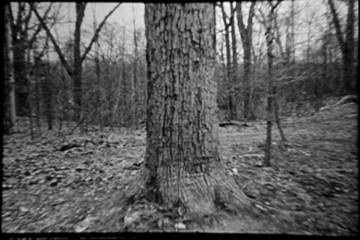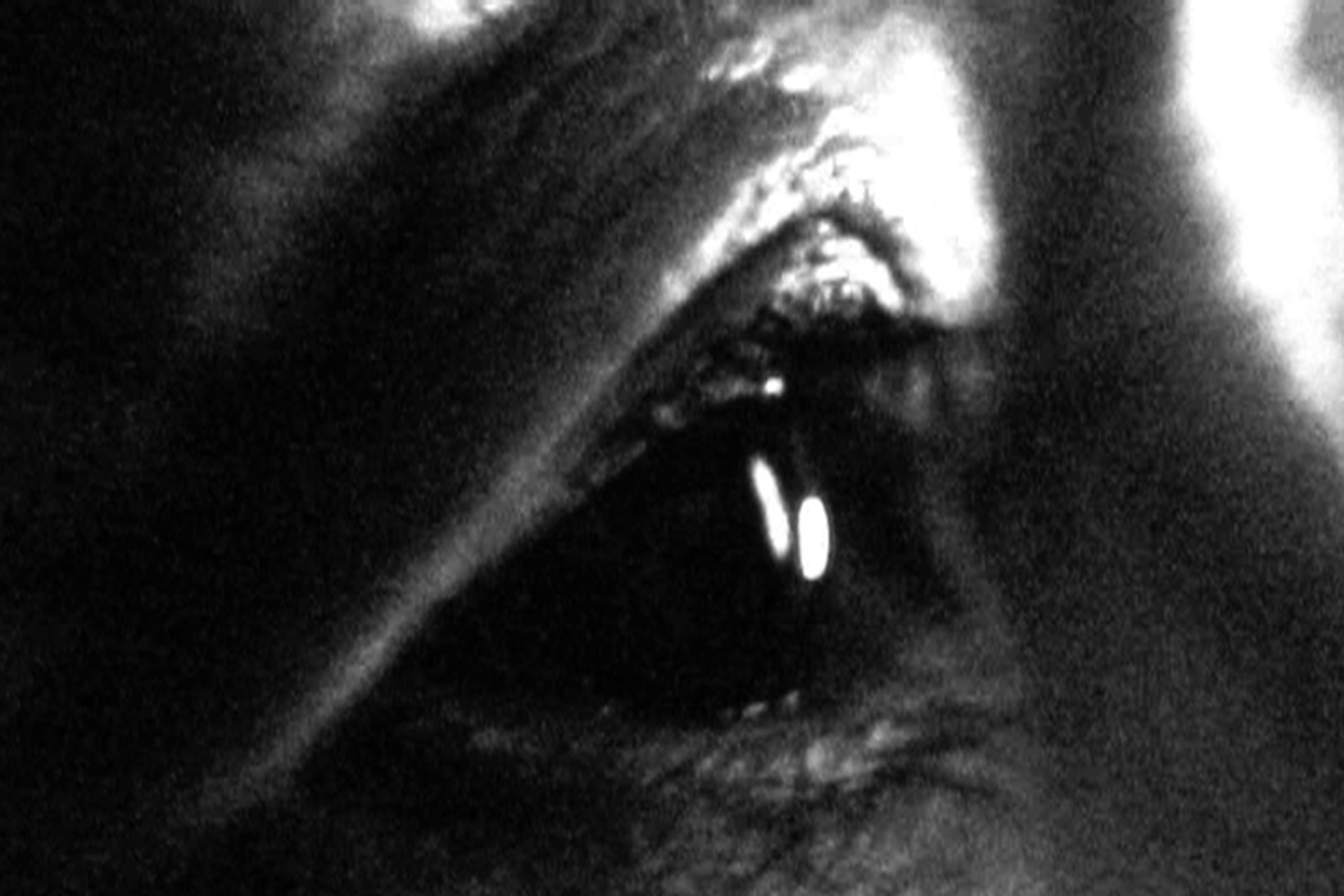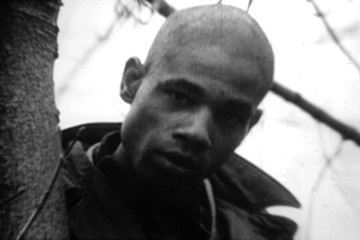On Sylvia Schedelbauer's
SOUNDING GLASS
1 Mar 2012

"Waves of consciousness roll in, roll out, leave some writing, and just as quickly new waves roll in and erase it. I try to quickly read what's written there, between one wave and the next, but it's hard. Before I can read it the next wave's washed it away. All that's left are puzzling fragments."--Kafka on the Shore, Haruki Murakami
N o time is wasted. Through the steady and measured cuts in Sylvia Schedelbauer's found footage film, SOUNDING GLASS, the viewer is immediately swept into a wave of fragmented memories shared with us by a young man in the woods. As these memories flash before us, we start to make connections with the landscape, people, and the socio-political dilemma of this young man's past.Flickering images of a barren forest dissolve into a tracking shot of a rural Pacific Asian landscape. One can see the heaviness in the traveling clouds. Nature is moving, signaling the destruction that is to come or the destruction that has taken place. Reminiscent of an eerie dream, the viewer's attempts to follow the traces of this latent landscape. As the story gets constructed, many questions arise. We try to figure out the details in relation to time, space, and history. Why have we been placed here and what is the role of this man in the woods?

Much of the imagery in SOUNDING GLASS does indeed turn out to be external destruction. Both natural destruction and images of war are pieced together, perhaps to represent the different layers of negativity that work against us in life. By combining the calming soundtrack and hypnotic editing technique with these aggressive images, Schedelbauer allows us to internalize the external destruction and further our understanding of this man's experience.
One character in particular is presented to us as an extreme close-up on an elderly woman's eye. She becomes a reoccurring motif and we wonder who she is and how she ties in with the main character. Is she a friend? An enemy of war? Perhaps a family member?
Mystique in SOUNDING GLASS comes from trying to figure out who the people are and the stories behind them. There are some major players that reappear to us throughout the film and others that only stay with us for less than a couple of frames. A Japanese woman in a kimono rushes by, a young couple shares a passionate kiss, we witness a human birth. These are all points of reference for us to know where this man has stemmed from and where he ended up. One character in particular is presented to us as an extreme close-up on an elderly woman's eye. She becomes a reoccurring motif and we wonder who she is and how she ties in with the main character. Is she a friend? An enemy of war? Perhaps a family member? What is particular about the people we encounter is that they are all non-white or racially ambiguous and also never fully revealed within the frame. They are presented to us in fragments through extreme close ups, as silhouettes or with their backs turned to us. But having just these fragments is enough. It's enough to let the viewer dive into her imagination and create her own understanding of who these persons could be rather than presenting an idiosyncratic version of what "was".
As we continue to understand who these people are and decipher the memories of our young protagonist staring at us from inside the woods, we also begin to question our world history. We are placed in North-East Asia during 1940's wartime. There are some moments--or I should I say, some people--that don't fit in with the history we've been taught. Being conscious of the cultural dislocation theme in Schedelbauer's past films, including Memories (2004) and Remote Intimacy (2008), it is apparent that this man's particular appearance was not chosen at random. His ambiguity (perhaps mixed race or just a foreigner in a new land) becomes a symbol of the changing times and appears as a bold statement of what could be unwritten history.
We are placed in North-East Asia during 1940's wartime. There are some moments--or I should I say, some people--that don't fit in with the history we've been taught. Being conscious of the cultural dislocation theme in Schedelbauer's past films, including Memories (2004) and Remote Intimacy (2008), it is apparent that this man's particular appearance was not chosen at random.
This carefully constructed story of a young man's haunting memories both compels and challenges the viewer with it's content. Schedelbauer has us continually questioning the images presented before us, not necessarily to tell us of a specific drama but rather to get the viewer to question the idea of representation of minorities in film and, furthermore, in our own histories.
_____Brenda Contreras, a Southern California native, lives and labors in the southern coast of Nayarit, Mexico. She is a curator and filmmaker focused on experimental film and video. Specifically, her interests lie in exploring and bringing light to human rights, feminist issues, and the marginalized all served with a side of surrealism.
Sylvia Schedelbauer website